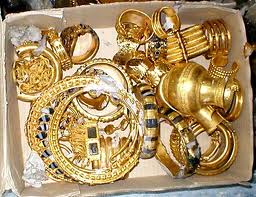A Strange Accident in The Summer of 1982
By Osama AttarBashi
Translated to English by Wefa M. S.
In an area near the Iranian city of
"Gilan West", about 80 km from the Iraqi city of Khanaqin, our
regiment settled to control a section of the combat zone. The region consisted
of two mountain ranges, and in between them was a valley extending for a
distance of 15-20 km. In the middle of the valley, there was a paved road
extending from the Iraqi-Iranian borders into Iranian lands, and there were
many deserted villages on the edge of the mountain and in the valley.
Some battles took place in this
region before we arrived, and when our regiment reached there, the Iranian
forces were stationed at the top of the mountain range, while the Iraqi forces
were stationed on the lower edges of the mountain range. Some soldiers were
present in protective shelters on the edge of the motorway in the middle of the
valley. As a result of this positioning, movement was very limited during the
day, so we stayed awake all night and fell asleep after the sun rise. Our day
began in the afternoon or before sunset: We had breakfast between 2 and 4 pm,
and our lunch usually took place after sunset, and so the days were going routinely
quiet.
No confrontations or battles were
expected in that area because the situation was calm, and our regiment
headquarters was at the beginning of the mountain range on the left of the
road, and it consisted of a group of small houses in an abandoned village.
Captain Ibrahim was a close friend
with a cheerful and life-loving personality, and he always lamented the
absurdity of this war and how it eats the men of Iraq. We spent most of our
time together accompanied by the Commander of the Regiment, Major Abdul-Jabbar.
For several days, Captain Ibrahim
kept asking me to go to the barber, but I was not eager to go with him. Also
there was no barber in our regiment at the time, which means that we have to go
to another regiment, which was located about 10-15 minutes away by car.
One day Ibrahim said we should go to
the barber and he wanted me to go with him, so we agreed to go the next day
after dark. The next morning, at the breakfast table, he told me that today we
would go to the barber at night, and I confirmed that. When darkness fell,
Ibrahim came to my room door and said that he was waiting for me in the Waz car
(a small Russian military car that seats four people), so I told him that I
would go to the room to put on my boot and follow him.
I entered my room and sat on my bed
for some time, and I do not know the reason that prompted me to do that. Then I
went out to tell Ibrahim while he was in the car that I would not go with him
today, so he got angry and said then he would go alone. He ordered the driver
to move and with him was one of the soldiers.
I sat waiting for Ibrahim. I
expected that he would come back within an hour, but he was late. After about
two hours, the news came from one of the soldiers on the main road indicating
that one of the cars on the road was parked and broken, so I got into the car
with the commander and went to find out about the matter. When arrived, we
found Captain Ibrahim had been shot in right side of the abdomen near the
liver, and there was no sign of the driver and the accompanying soldier!
Shortly later, the commander of the
brigade (the late Sultan Hashem Ahmed, later Minister of Defense) arrived in
the region and explored the location of the accident, as it was strange that
the Iranian group could reach this area near the main road in the middle of the
valley without being discovered by our forces, which means that an Iranian group
slipped into the Iraqi forces, which were deployed at the edges of the
mountain. I was unable to explain this incident for a long time.
The brigade commander requested a
group of commandos, in addition to other forces, to patrol the mountainside in
an attempt to catch up with the infiltrating force and return the captured
soldiers. The search for them continued till dawn, but without result.
That is how comrade and friend
Ibrahim Al Wasiti was martyred.
_________________




